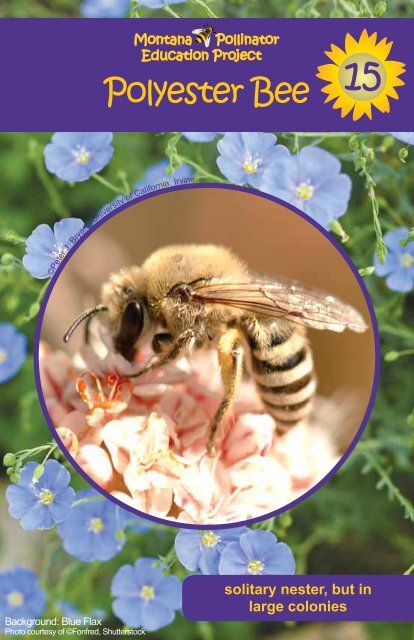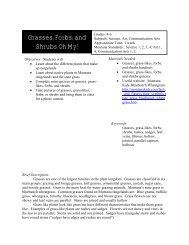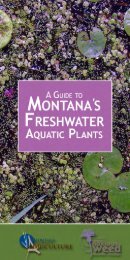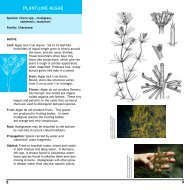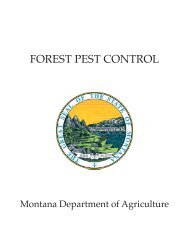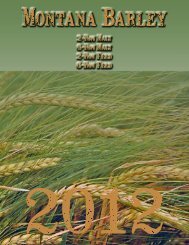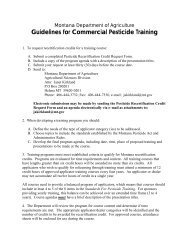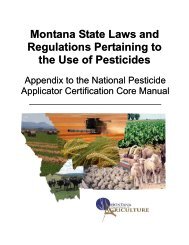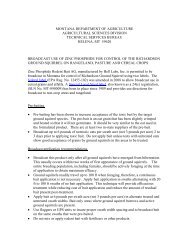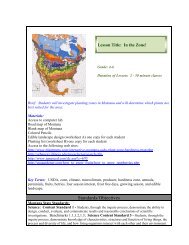Polyester Bee
Polyester Bee
Polyester Bee
You also want an ePaper? Increase the reach of your titles
YUMPU automatically turns print PDFs into web optimized ePapers that Google loves.
<strong>Polyester</strong> <strong>Bee</strong> 15<br />
©Peter J. Bryant, University of California, Irvine<br />
Background: Blue Flax<br />
Photo courtesy of ©Fonfred, Shutterstock<br />
solitary nester, but in<br />
large colonies
<strong>Polyester</strong> <strong>Bee</strong>s - Colletes spp.<br />
Genus: Colletes Family: Colletidae<br />
Slender bees with pale abdomen stripes and lots of hair<br />
7-15 mm long<br />
More than 100 species in North America<br />
<strong>Polyester</strong> bees have a heart-shaped face, which is one of the ways<br />
they can be distinguished from other bees. They also carry pollen<br />
on their thorax and the upper part of their back legs on their scopae.<br />
The polyester bees got their name because of a material they line<br />
their nest with which resembles cellophane plastic or polyester.<br />
The plastic like material is secreted from a special gland on the<br />
abdomen and is spread about using their short forked tongue<br />
or proboscis. This plastic like lining not only keeps the nest<br />
waterproof but also provides a barrier against fungus and bacteria<br />
entering the nest.<br />
Once the liquid mixture of pollen and nectar has been placed in<br />
the cells the female attaches an egg to the upper portion of the<br />
cell wall. After this, she will secrete a substance from a gland<br />
near her mandibles and spread it over the eggs. This substance<br />
called linalool protects the eggs by working as a bactericide and<br />
fungicide. The cellophane lining for the nest allows the bees to<br />
nest in areas that would otherwise be too wet for nesting.<br />
<strong>Polyester</strong> bee is just one of the common names<br />
given to this bee; other common names include<br />
cellophane bee, plasterer bee, and membrane<br />
bee. Some of the species in the Colletidae<br />
family are somewhat nocturnal; active only<br />
during early dawn and late dusk hours.<br />
The plastic material that these bees line<br />
their nest with is of interest to scientists.<br />
“A research group at Olin College of<br />
Engineering has been studying polyester bee<br />
plastic for several years: ‘Bio-plastics are only in<br />
the early stages of development,’ says student researcher Shannon<br />
Taylor. Our goal is to understand [bee plastic] well enough to<br />
create something similar ourselves” 1 .<br />
1 Clark, Patterson. “Urban Jungle.” Washington Post. N.p., 15 Mar. 2011. Web. 24 Aug. 2012. <br />
©Dr. Nicolas J. Vereecken<br />
The USDA is an equal opportunity provider and employer. (agr.mt.gov)


